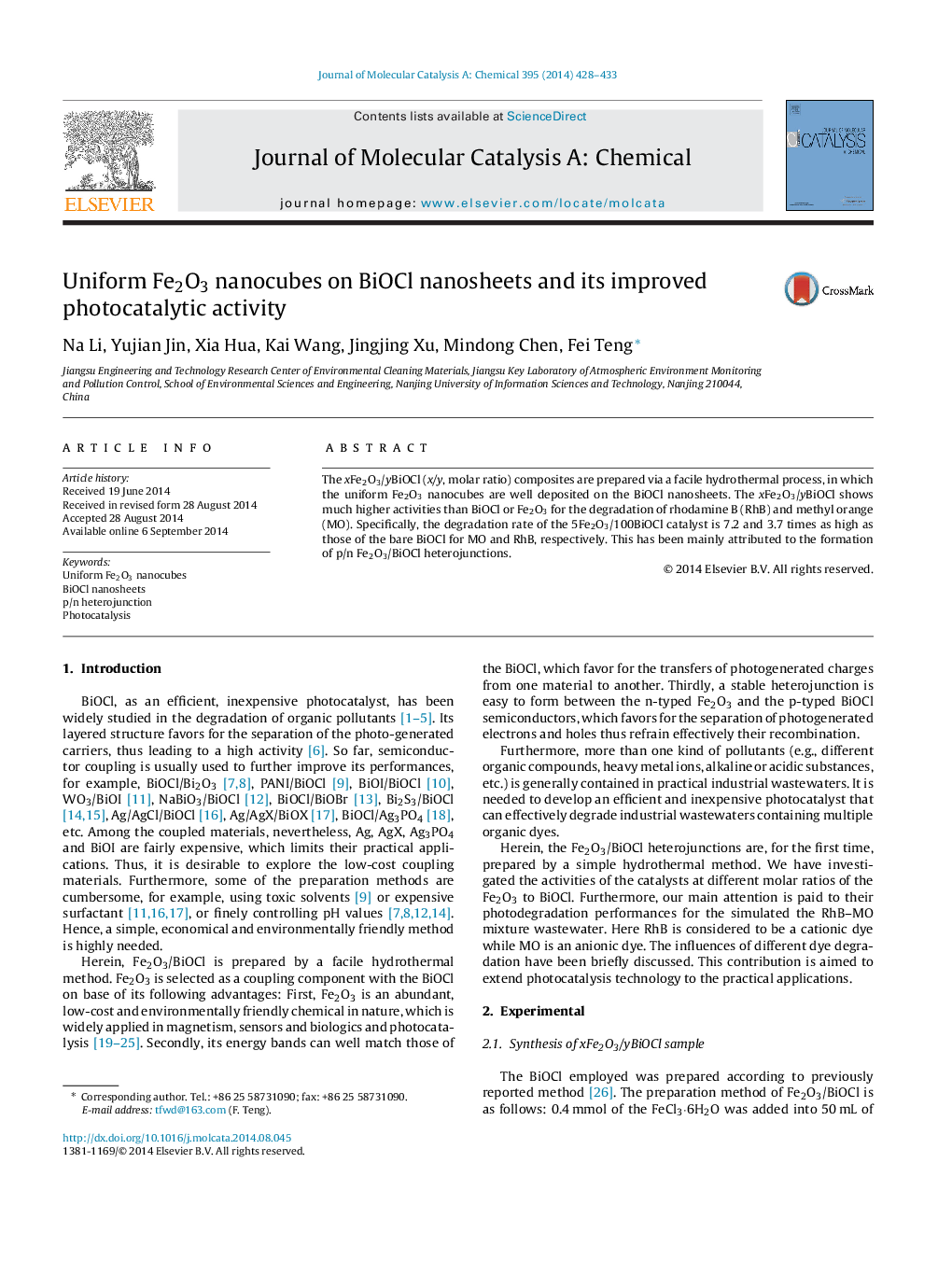| Article ID | Journal | Published Year | Pages | File Type |
|---|---|---|---|---|
| 65341 | Journal of Molecular Catalysis A: Chemical | 2014 | 6 Pages |
•The Fe2O3/BiOCl p/n heterojunctions are prepared by an in situ hydrothermal method.•The Fe2O3 nanocubes uniformly deposit on the BiOCl nanosheets.•The Fe2O3/BiOCl heterojunctions have a higher activity than bare Fe2O3 or BiOCl for the degradation of dye.
The xFe2O3/yBiOCl (x/y, molar ratio) composites are prepared via a facile hydrothermal process, in which the uniform Fe2O3 nanocubes are well deposited on the BiOCl nanosheets. The xFe2O3/yBiOCl shows much higher activities than BiOCl or Fe2O3 for the degradation of rhodamine B (RhB) and methyl orange (MO). Specifically, the degradation rate of the 5Fe2O3/100BiOCl catalyst is 7.2 and 3.7 times as high as those of the bare BiOCl for MO and RhB, respectively. This has been mainly attributed to the formation of p/n Fe2O3/BiOCl heterojunctions.
Graphical abstractThe xFe2O3/y BiOCl shows much higher activities than BiOCl or Fe2O3 for the degradation of rhodamine B and methyl orange.Figure optionsDownload full-size imageDownload high-quality image (90 K)Download as PowerPoint slide
